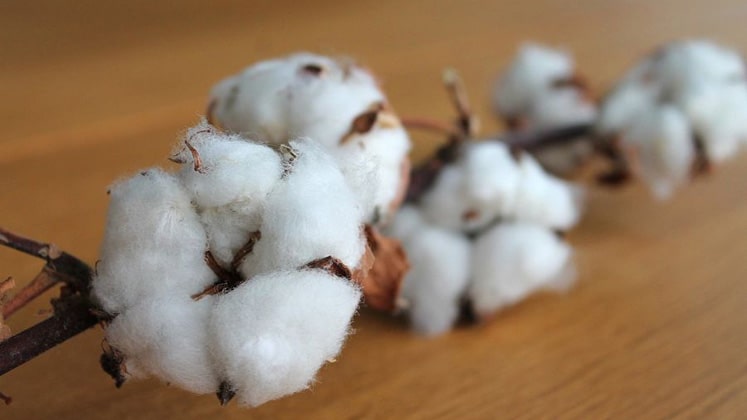
ELS (Extra-long staple) cotton (Gossypium barbadense L.) with its superior fibre qualities, has a very high demand in India, yet it is produced in relatively small quantities. To boost its productivity, there is a substantial opportunity to expand the ELS’s cultivation area. However, the fibre quality is significantly impacted due to moisture stress during crop’s prolonged growing phase, which is an issue in rainfed environments. A wide range of additional qualities in ELS cotton, including agronomic performance, stress tolerance, fibre quality, and production potential, as well as insect resistance and herbicide tolerance, require urgent attention through contemporary biotechnology.
Utilising cutting-edge molecular techniques like genetic engineering and biotechnological approaches in cotton have resulted in enormous improvements in cotton productivity and defence against biotic and abiotic stressors. Its time these advances are extended to ELS cotton.
ELS cotton – global scenario
The ELS Cotton consists of fibre 35 mm and above and is in high demand for the production of premium ring-spun yarns all over the world. Sewing threads, loom yarns, blends with polyester, and premium fabrics are among the frequent uses of ELS cotton. Extra-long staple (ELS), long staple (LS), and ELS variants are all included in the extra-long staple cotton category, these are pre-dominantly produced in Egypt. The Gossypium barbadense species, on a global scale, dominates the production of ELS cotton. The interspecific hybrids between G.hirsutum and G.barbadense and the G.barbadense species accounts for this group in India.
The biggest producers of ELS cotton are Egypt, the US, and Australia. ELS cotton costs 35–40% more than regular cotton in India due to its superior quality. ELS cotton commands a higher price because it generates high-quality 60-120 count yarn, which is then used to make expensive sarees, bedclothes, and other items. ELS cotton is marketed globally for about Rs 1.5 lakh for each candy, but it costs about Rs 70,000 per candy in India (one candy weighs 356 kg). Our textile sector will save a significant amount of foreign currency if ELS cotton production increases, and farmers will also gain due to its better selling price and high demand.
It is imperative to boost ELS cotton production in India
ELS cotton only makes up about 1 million of India’s domestic use, which amounts to over 31 million bales. However, industry participants claim that the domestic output of ELS cotton in India ranges between 350,000 and 400,000 bales. This implies that each year 600,000 bales must be imported.
The market for textiles made of ELS cotton (32 mm and higher) is expanding exponentially. The potential for value addition in goods manufactured of these cotton kinds is considerable. Making fine and superfine count cotton yarns available is crucial to enhance the position of the textile sector in domestic and global markets. Making cotton available to mills at competitive rates is crucial for maintaining trade viability in the global marketplace. For India to maintain its market share and boost the income of the farming community, it is now imperative to prioritize increasing the production of ELS cotton.
Recent push from government
ELS cotton production is being given a boost as the government has proposed a cluster-based and value chain approach involving stakeholders across the supply chain. According to the 2023 Union Budget, the government intends to increase the productivity of extra-long staple cotton by utilizing Public Private Partnerships.
ELS cotton productivity proposal in the budget is intended to reduce the reliance on imports and develop cotton strain that can create high-quality yarn. To boost the productivity of ELS cotton, the Union Budget is looking at better coordination between farmers, the State, and industry for input supply, extension services, and market links.
Conclusion
The quality of cotton fibre has previously been increased through traditional plant breeding procedures; however, this method is now constrained by species incompatibility and the limited available diversity. All aspects of fibre quality, including fibre length, micronaire, uniformity, and strength, are changeable. Identifying genes that play a significant role in fibre quality may be possible, which can be manipulated for ultimately impacting output traits of primary interest to farmers and the textile industry. This would require a better understanding of gene function, interaction, and regulatory processes that control metabolic pathways that affect fibre properties. The Central government might subsidize states, who would then provide financial support to clusters, farmer producer organizations, and even individual farmers adopting its production as part of the Budget announcement to include the private sector in increasing the productivity of ELS cotton.
References
- https://epubs.icar.org.in/index.php/IJAgS/article/view/114290/44528
- https://www.thehindu.com/business/budget/budget-2023-budget-gives-thrust-to-handicrafts-els-cotton/article66459716.ece
- https://www.newclothmarketonline.com/news-briefs/sima-cotton-development-research-association-seeks-support-for-extra-long-staple-clean-cotton/
- https://www.thehindu.com/business/budget/budget-2023-budget-gives-thrust-to-handicrafts-els-cotton/article66459716.ece
- https://www.fibre2fashion.com/news/textile-news/indian-fm-announces-benefits-for-msmes-els-cotton-in-budget-2023-24-285520-newsdetails.htm
- https://www.cicr.org.in/pdf/ELS/general2.pdf

